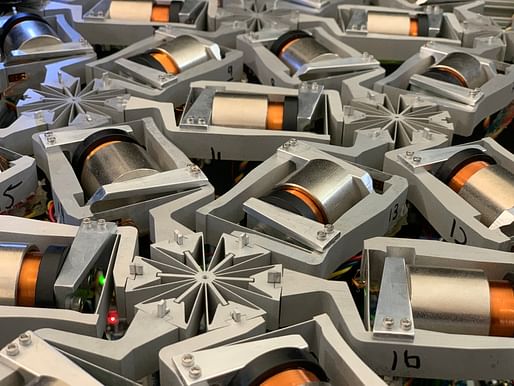

Researchers from the University of California Los Angeles (UCLA) have developed a new type of material that can create adaptable, strong structures by learning from its surroundings. Dubbed a ‘mechanical neural network’ by its creators, the material uses a unique lattice structure that can improve its ability to deal with unexpected forces over time.
The mechanical neural network derives its strength from the geometries that comprise the structure rather than the properties of the materials used to create it. “Take hook-and-loop fabric closures like Velcro, for example,” explained UCLA’s Ryan H. Lee in a recent article on The Conversation. “It doesn’t matter whether it is made from cotton, plastic or any other substance. As long as one side is a fabric with stiff hooks and the other side has fluffy loops, the material will have the sticky properties of Velcro.”
The system designed by the UCLA team takes its inspiration from artificial neural networks, where layers of interconnected nodes learn to do tasks by altering the weight placed on each connection. The group upscaled the concept to a mechanical system with adjustable connections to see if the artificial neural network could be replicated.
Following a series of computer models which experimented with shapes and multi-directional forces across 200 different lattice structures, the team determined that a triangular lattice offered the most promising system. A physical prototype lattice was then constructed of electromagnetic springs, with 2 x 1.5-foot nodes held together by 6-inch connections. With the support of an algorithm, the lattice structure was able to learn and change shape when subjected to different forces.
“So far, our team has worked only with 2D lattices,” Lee continued. “But using computer modeling, we predict that 3D lattices would have a much larger capacity for learning and adaptation. This increase is due to the fact that a 3D structure could have tens of times more connections, or springs, that don’t intersect with one another. However, the mechanisms we used in our first model are far too complex to support in a large 3D structure.”
The team will continue to work on making the individual pieces smaller with precise properties of flex and tension and hopes to see a future of “powerful smart mechanical neural networks” with dense 3D connections.
Development of the material comes months after MIT developed a 3D printed lattice material that uses air pressure to warn about its own movement. Other material science advancements recently featured in our editorial include a terracotta system that uses water to cool indoor spaces without electricity, a timber dome made entirely of waste materials, and a 3D printed prototype ‘eggshell pavilion.’
No Comments
Block this user
Are you sure you want to block this user and hide all related comments throughout the site?
Archinect
This is your first comment on Archinect. Your comment will be visible once approved.